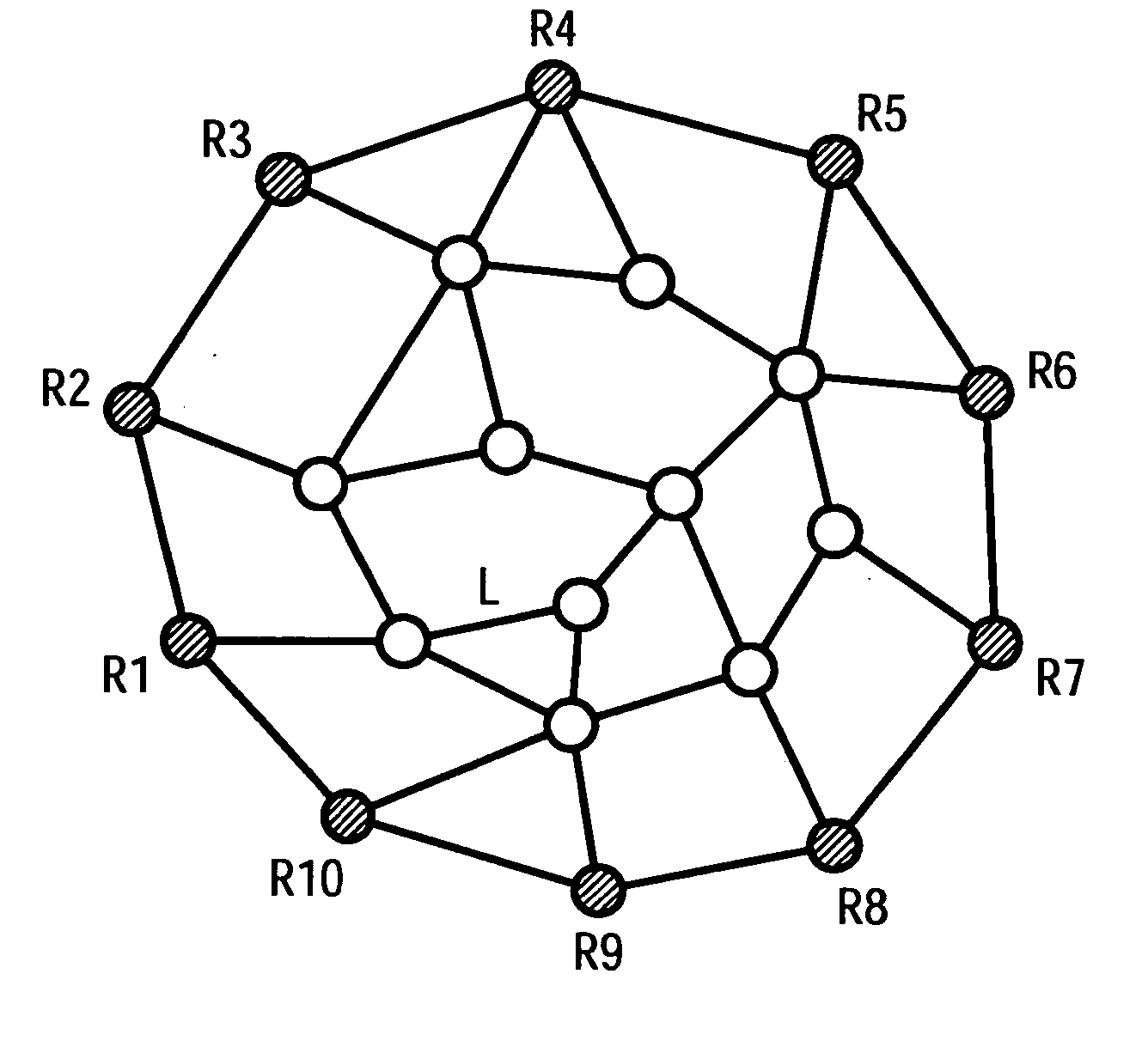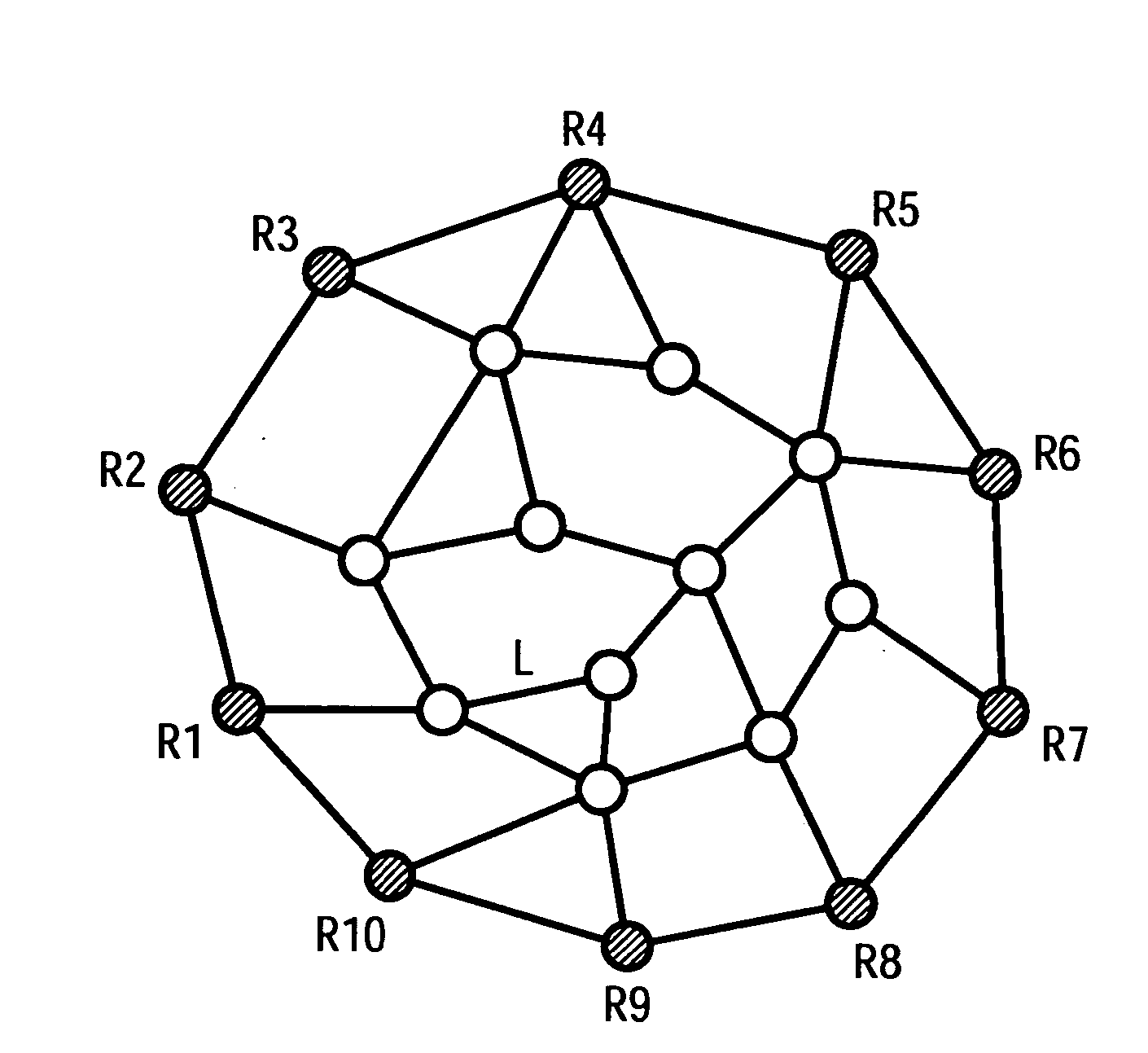Method for determining limits for controlling traffic in communication networks with access control
a technology of communication network and traffic limit, applied in the field of determining traffic limit in communication network access control, can solve the problems of limiting or controlling traffic, affecting the stability of the network, and the status information of flows that are switched through the network must be stored, so as to reduce the probability of blockage, prevent faults occurring, and improve the effect of controllability
- Summary
- Abstract
- Description
- Claims
- Application Information
AI Technical Summary
Benefits of technology
Problems solved by technology
Method used
Image
Examples
Embodiment Construction
[0021] The FIGURE shows a network made up of nodes and links. In this case the marginal nodes R1 to R10 are indicated by solid circles. The internal nodes are indicated by non-solid circles. Links are illustrated by connectors between nodes. For the network different types of peripheral conditions can be defined which guarantee approval control at the margin of the network. The type of peripheral conditions can for example be selected to depend on the topology of the network. The form of the peripheral conditions helps to decide on the blocking probabilities for which an overload situation occurs in accordance with the inventive method. Possible peripheral conditions are: [0022] 1. Limits for the traffic which is transmitted between two marginal nodes, i.e. a limit value in each case for a pair (Ri,Rj), j, i ε{1, . . . , 10}, which is defined by two marginal nodes.
[0023] 2. Limit values for all ingress and egress nodes. If we assume that all marginal nodes Ri, i ε{1, . . . , 10} ar...
PUM
 Login to View More
Login to View More Abstract
Description
Claims
Application Information
 Login to View More
Login to View More - R&D
- Intellectual Property
- Life Sciences
- Materials
- Tech Scout
- Unparalleled Data Quality
- Higher Quality Content
- 60% Fewer Hallucinations
Browse by: Latest US Patents, China's latest patents, Technical Efficacy Thesaurus, Application Domain, Technology Topic, Popular Technical Reports.
© 2025 PatSnap. All rights reserved.Legal|Privacy policy|Modern Slavery Act Transparency Statement|Sitemap|About US| Contact US: help@patsnap.com


